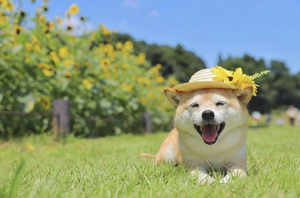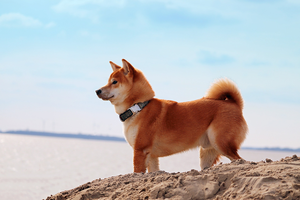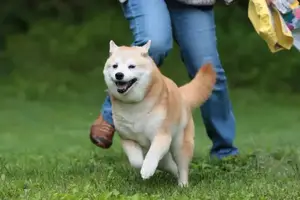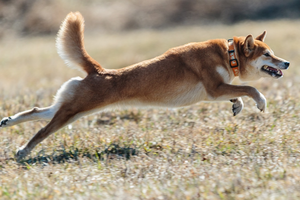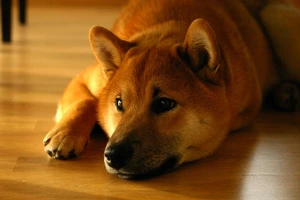
The Shiba Inu is a beloved breed of dog known for their fox-like appearance, small size, and spirited personality. However, their history as hunting dogs in Japan is less well-known. Understanding the origins and evolution of the Shiba Inu breed sheds light on their unique characteristics and helps us appreciate their role in Japanese culture. In this article, we will explore the fascinating history of the Shiba Inu, from their origins as hunting dogs to their current role as cherished house pets.
Origins of the Shiba Inu
The origins of the Shiba Inu breed are somewhat shrouded in mystery. Some theories suggest that they may have descended from Chinese dogs brought to Japan over 2,000 years ago, while others believe their ancestors were native Japanese dogs that evolved in isolation on the island of Honshu.
Regardless of their exact origins, it is clear that the Shiba Inu was developed as a hunting dog in Japan, specifically for hunting small game and birds. It is believed that the breed was named after the brushwood bushes in which they hunted, as “shiba” means brushwood in Japanese.
The Shiba Inu was a valuable asset for hunters due to their high energy, agility, and keen senses. They were also prized for their small size, which allowed them to navigate through dense brush and chase game into tight spaces where larger dogs could not go.
Shiba Inu as Hunting Dogs
The Shiba Inu played an important role in Japanese hunting culture for many centuries. They were used primarily to hunt small game and birds, such as rabbits, pheasants, and quail.
Hunters trained their Shiba Inus to track and flush out game, using their keen sense of smell and sharp eyesight to locate prey in the brush. Once the game was flushed out, the Shiba Inu would chase it down and retrieve it for the hunter.
The Shiba Inu’s small size and agility made them well-suited for hunting in dense brush and mountainous terrain, where larger dogs would struggle to keep up. Their feisty and independent nature also made them well-suited for the rigors of hunting, as they were not easily intimidated by prey or deterred by difficult terrain.
The Shiba Inu’s hunting instincts are still present in the breed today, and they are known to have a strong prey drive. However, they are now more commonly kept as companion animals, and their hunting abilities are no longer a primary focus.
Decline of the Shiba Inu as Hunting Dogs
The rise of firearms in Japan in the late 19th century had a profound impact on the role of hunting dogs, including the Shiba Inu. As firearms became more widely available, hunters began to rely less on dogs for hunting and more on guns.
The decline of traditional hunting practices led to a decrease in demand for hunting dogs like the Shiba Inu. By the early 20th century, the breed was in danger of disappearing altogether.
Fortunately, a small group of dedicated breeders worked to preserve the Shiba Inu and prevent its extinction. They focused on breeding dogs with desirable traits, such as a keen sense of smell, high energy, and an independent spirit.
Today, the Shiba Inu is recognized as a distinct breed and is a beloved companion animal in Japan and around the world. However, their history as hunting dogs is an important part of their heritage that should not be forgotten.
Revival of the Shiba Inu Breed
The Shiba Inu breed was almost lost during and after World War II due to a combination of factors, including military campaigns, natural disasters, and government policies. By the end of the war, only three bloodlines of Shiba Inus remained, and the breed was on the brink of extinction.
In the post-war years, a small group of breeders worked tirelessly to rebuild the Shiba Inu population. They used a combination of careful breeding, genetic testing, and strict selection criteria to produce healthy dogs with desirable traits.
Their efforts paid off, and by the 1950s, the Shiba Inu had made a comeback. In 1954, the breed was officially recognized by the Japanese Kennel Club, and it quickly gained popularity as a companion animal in Japan.
In the decades that followed, the Shiba Inu continued to gain popularity around the world. Today, they are recognized by many international kennel clubs and are a beloved breed among dog lovers. The Shiba Inu’s survival and revival is a testament to the dedication and hard work of the breeders who kept the breed alive during its darkest days.
Shiba Inu in Modern Times
The Shiba Inu has come a long way since its days as a hunting dog in Japan. Today, the breed is primarily kept as a companion animal, valued for its playful, affectionate, and independent nature.
Shiba Inus are known for their fox-like appearance, with their pointy ears, thick fur, and curled tail. They are a small to medium-sized breed, typically weighing between 17 and 23 pounds.
In terms of temperament, Shiba Inus are known for being loyal and loving to their families, but can be reserved or aloof with strangers. They are also known for their stubborn streak, and may be difficult to train for inexperienced dog owners.
Despite these challenges, many people are drawn to the Shiba Inu’s unique personality and appearance. They are a popular breed in Japan and around the world, and have even gained a following on social media platforms like Instagram.
Overall, the Shiba Inu is a fascinating breed with a rich history and a bright future as a beloved house pet.
Famous Shiba Inus
The Shiba Inu has gained a following in popular culture thanks to a few famous dogs that have captured the hearts of millions. Here are a few notable Shiba Inus:
-
Hachi: Hachi was a faithful Shiba Inu who lived in Japan in the 1920s. Every day, he would accompany his owner to the train station and wait for him to return from work. When his owner died suddenly, Hachi continued to wait for him at the station every day for nine years until his own death. Hachi’s loyalty and devotion inspired a movie called “Hachi: A Dog’s Tale” in 2009.
-
Kabosu: Kabosu is a female Shiba Inu who became an internet sensation in 2013 when her owner posted a series of photos of her making funny faces. One of these photos, known as the “Doge” meme, features Kabosu with a confused expression and the caption “Wow. Much doge. Very Shiba. Such internet.” The meme quickly went viral and has since become a cultural phenomenon.
-
Maru: Maru is a Shiba Inu who gained fame on YouTube for his adorable antics. His videos, which feature him playing with toys and boxes, have been viewed millions of times and have made him a beloved internet celebrity.
These famous Shiba Inus have helped to bring attention to the breed and its unique characteristics. They are a reminder of the special bond that can form between dogs and humans, and the joy that they can bring to our lives.
The Shiba Inu is a breed with a rich and fascinating history. From their origins as hunting dogs in Japan to their current role as beloved house pets around the world, the Shiba Inu has come a long way.
Despite the challenges that the breed has faced over the years, including near-extinction during World War II, the Shiba Inu has survived and thrived thanks to the dedication of breeders and the love of dog owners.
Understanding the history of the Shiba Inu is important not only for appreciating their unique characteristics and personality, but also for recognizing their place in Japanese culture and their impact on popular culture around the world.
As we continue to cherish our Shiba Inus as loyal companions and beloved family members, let us also remember their heritage and the important role that they have played in our lives.


